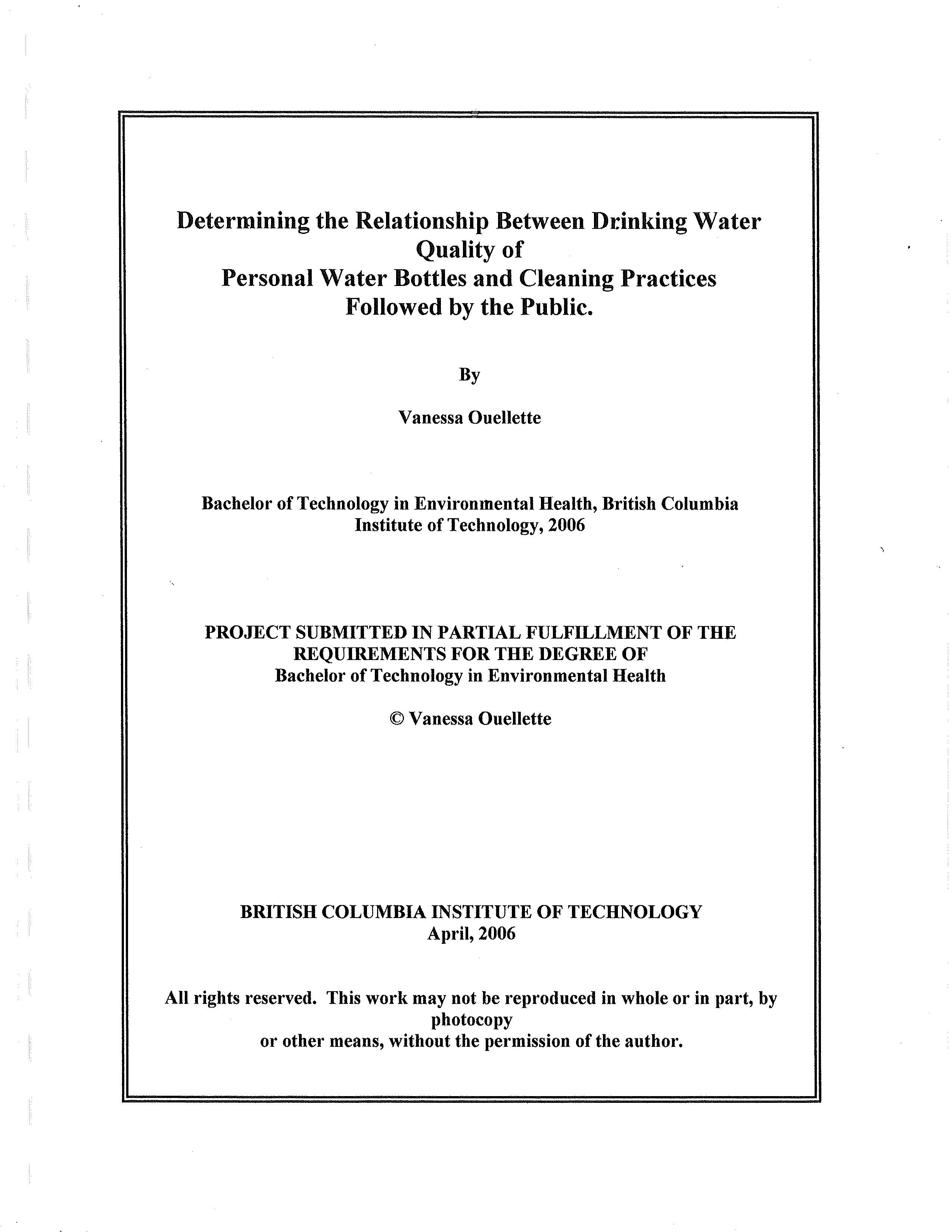Determining the Relationship Between Drinking Water Quality of Personal Water Bottles and Cleaning Practices Followed by the Public
DOI:
https://doi.org/10.47339/ephj.2014.233Keywords:
Drinking water, Personal water bottles, Cleaning practices, Canadian drinking water quality guidelines, Public educationAbstract
It is becoming very common to see people carrying around personal water bottles throughout the day wherever they go, whether it be to school, work, or the gym (Rydings, 2004). People may have a false sense of security that the water they are drinking is safe because it is from the tap or from a commercial water bottle or cooler, but this may not be the case once you put it in a personal water bottle. Initially, there are guidelines in place to ensure safe drinking water from the tap and safe bottled water (Health Canada, 1996; CFIA, 2002), but there are no water quality guidelines once you put it in a water bottle. The purpose of this research project was to determine if a relationship exists between drinking water quality found in personal water bottles and the general cleaning practices followed by the public. The microbiological values obtained were compared to the Canadian Drinking Water Quality Guidelines to determine if they met the guidelines. Finally, it was assessed if public education was needed regarding cleaning practices for personal water bottles users.
Both a short survey and microbiology testing were conducted. The survey was carried out by means of in-person interviews. Ninety participants were randomly selected by voluntarily responding to a posted sign requesting their participation. Approximately 110 ml sample of water from their personal water bottle was collected using a sterilized sample bag. Microbiological analysis was conducted within 30 hours of sample collection by means of Membrane Filtration and Heterotrophic Plate Count (HPC) using standard m-HPC agar. All microbiological and survey data collected was entered into NCSS in order to statistically analyze the results. The analysis of variance (ANOVA) was used to determine the differences between the types of cleaning methods (soap and water, rinsing with tap water and other methods) and microbiological counts. The results indicated that there was a significant difference between the types of cleaning. Tap water rinsing resulted in the lowest average microbiological counts and the post hoc test revealed that the greatest difference between the types of cleaning methods used were with soap and water. Correlational/Regression statistics were used to determine the relationship between the timeframe of cleaning and microbiological counts. The results indicated that as the timeframe between cleaning increases, so did the microbiological counts, however the relationship was weak. The microbiological counts found in this study, exceeded the Canadian Drinking Water Quality Guideline HPC maximum limit of 500 cfu/ml 74.4% of the time. Based on all the results of the study, government agencies or personal water bottle manufacturers should consider developing and disseminating to the public the importance of regular cleaning of personal water bottles and recommend the best methods to use.
Downloads

Downloads
Published
How to Cite
Issue
Section
Categories
License
Copyright (c) 2006 Vanessa Ouellette

This work is licensed under a Creative Commons Attribution-NonCommercial-NoDerivatives 4.0 International License.
Content on this site is licensed under a Creative Commons Attribution-NonCommercial-NoDerivatives 4.0 (CC BY-NC-ND 4.0) license.
